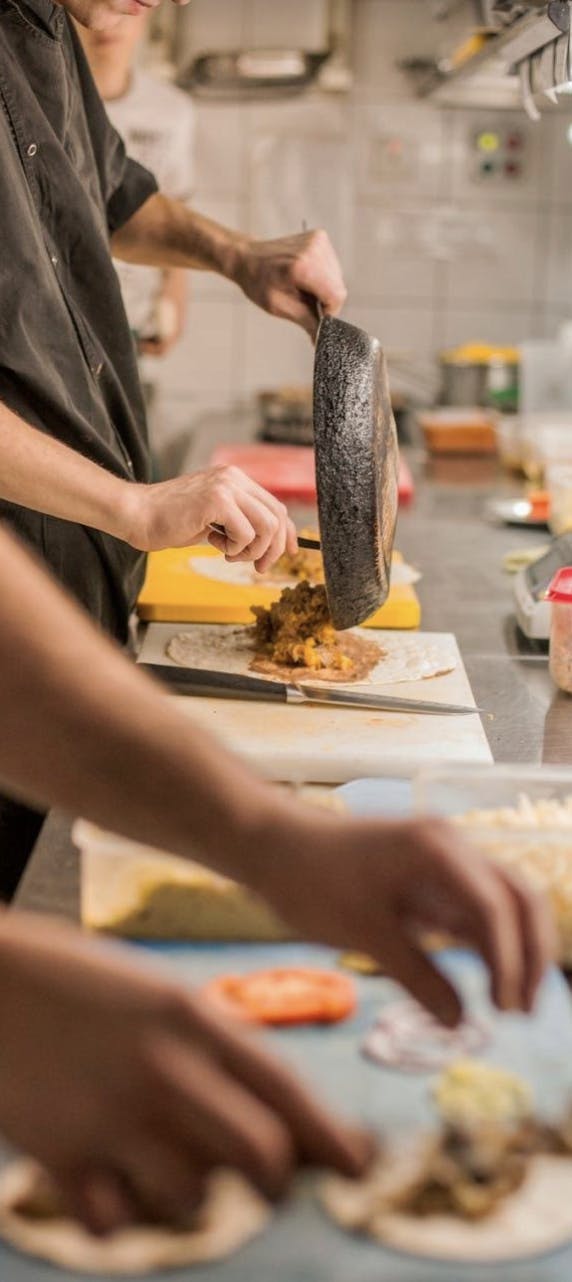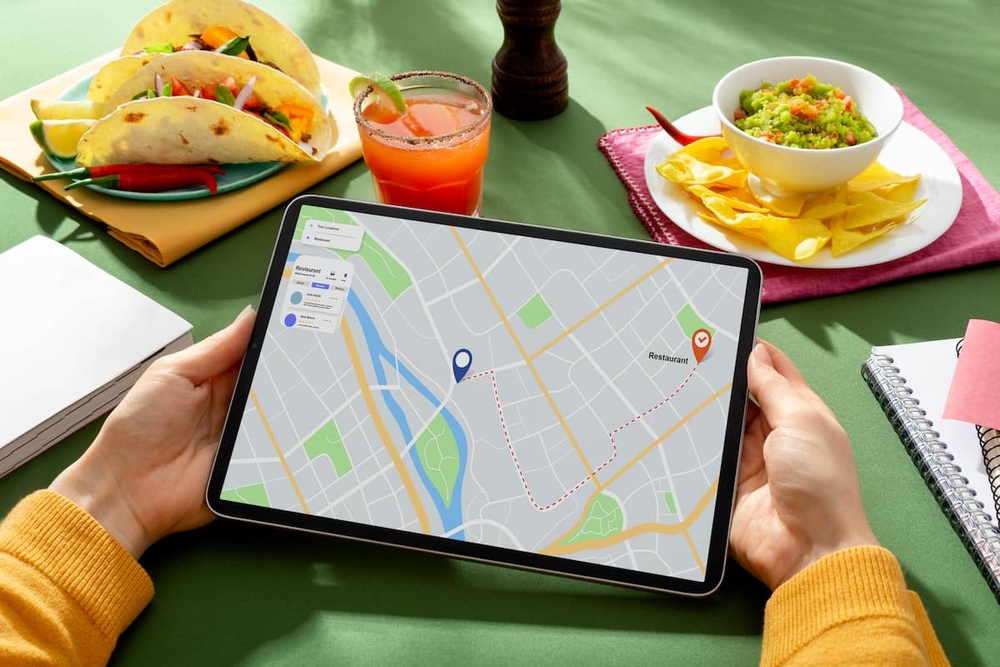Ghost Kitchens: everything you need to know before starting
Table of Contents
CloudKitchens
How many tacos can be delivered from a 1000sqft restaurant?
The same amount as a 200sqft ghost kitchen.
Ghost kitchens, also known as dark kitchens or virtual kitchens, have revolutionized the food industry. These delivery-only restaurants operate without a traditional storefront, focusing exclusively on online orders. While ghost kitchens offer many advantages, they also come with challenges that every restaurateur should consider.
In this article, we’ll break down the pros and cons of ghost kitchens, compare them to traditional restaurants, and help you determine if this business model is the right fit for your needs.
Ghost kitchens vs. traditional restaurants
Ghost kitchens and traditional restaurants serve different purposes and cater to distinct business models. Understanding their key differences can help entrepreneurs decide which setup aligns with their goals.
Traditional restaurants:
- Require a physical location for dine-in customers.
- Have high upfront costs, including rent, staff, and interior design.
- Depend on foot traffic and word-of-mouth marketing.
- Offer a full dining experience with ambiance, customer service, and table service.
Ghost Kitchens:
- Operate solely for online food delivery and takeout.
- Eliminate the need for prime real estate and a front-of-house staff.
- Reduce operational costs by focusing on kitchen efficiency.
- Rely on digital marketing and delivery apps for customer acquisition.
While traditional restaurants provide a more immersive dining experience, ghost kitchens prioritize efficiency and lower costs. Both models have their strengths, but the choice ultimately depends on the business owner’s objectives.
Read more: Transform your dark kitchen with smart online ordering solutions
The benefits of a Ghost Kitchen
Ghost kitchens have gained popularity due to their numerous advantages. Here are some key benefits:
Lower overhead costs
One of the biggest advantages of ghost kitchens is the reduction in expenses. Without the need for a physical dining space, restaurateurs save significantly on:
- Rent & real estate – Ghost kitchens operate in smaller, more affordable spaces, avoiding the high costs of prime real estate locations.
- Utilities & maintenance – With no dining area, costs associated with cleaning, decor, and customer-facing utilities are minimal.
- Labor costs – Fewer employees are needed since there are no front-of-house operations, reducing payroll expenses.
Read more: Boost efficiency and productivity in ghost kitchens
Flexibility and scalability
Ghost kitchens allow businesses to scale quickly and adapt to new opportunities with minimal risk. Key benefits include:
- Multi-brand strategy – Owners can launch multiple virtual restaurant brands from the same kitchen, testing new concepts without opening new locations.
- Geographic expansion – Businesses can expand into new markets by setting up additional ghost kitchen locations without investing in full-service restaurants.
- Quick adaptation – Since ghost kitchens are delivery-focused, they can easily adjust their menus and pricing strategies based on customer demand and competition.
Adaptability to market trends
Ghost kitchens are highly responsive to changing consumer preferences and market trends. Operators can:
- Modify menus easily – Unlike traditional restaurants with printed menus, ghost kitchens can frequently update digital menus based on seasonal trends and customer demand.
- Capitalize on emerging food trends – Experiment with plant-based meals, international cuisines, or health-conscious options without committing to a permanent menu shift.
- Adjust operations for peak hours – Use data analytics to optimize staffing and kitchen efficiency during high-demand periods, such as lunch and dinner rushes.
Increased focus on food quality
With no need to manage dine-in customers, ghost kitchen staff can devote more attention to food preparation and quality control. This results in:
- Consistent dish preparation – Without distractions, kitchen teams can follow standardized recipes for every order.
- Better packaging & presentation – More time can be spent ensuring that food is properly packaged for delivery, maintaining quality during transit.
- Faster Turnaround Times – A streamlined kitchen setup allows for efficient cooking processes and quicker order fulfillment.
Data-driven operations
Ghost kitchens rely heavily on technology and data analytics to optimize performance. By leveraging digital tools, businesses can:
- Analyze sales trends – Identify best-selling menu items, peak order times, and customer demographics.
- Optimize pricing strategies – Adjust pricing dynamically based on demand, competitor pricing, and operational costs.
- Enhance customer experience – Use data to personalize promotions, loyalty programs, and targeted marketing efforts, increasing customer retention and engagement.
Read more: How restaurant analytics can transform your operations
Challenges of a Ghost Kitchen
Despite the many advantages, ghost kitchens also come with challenges that operators need to address.
Heavy dependence on delivery platforms
Most ghost kitchens rely on third-party delivery apps like Uber Eats, DoorDash, and Grubhub to reach customers. While these platforms offer convenience and visibility, they charge high commission fees, sometimes as much as 30% per order.
This significantly impacts profit margins in delivery apps, forcing operators to either absorb the costs or increase menu prices, which could deter potential customers.
Increased competition
The low barrier to entry for ghost kitchens means that the market has become highly competitive. Since multiple virtual brands can operate from a single kitchen, customers have an abundance of choices, making it harder for any one brand to stand out.
To succeed, businesses must invest in strong branding, strategic marketing, and customer engagement efforts, such as loyalty programs and promotions, to gain a competitive edge.
Lack of direct customer interaction
Traditional restaurants thrive on personal connections with their customers, which helps build loyalty and brand recognition. Ghost kitchens, however, operate entirely online, making it harder to create lasting relationships with customers.
Without face-to-face interaction, businesses must rely on digital engagement strategies such as personalized email marketing, social media interactions, and prompt responses to online reviews to foster customer loyalty and trust.
Operational efficiency challenges
Managing high volumes of online orders efficiently requires sophisticated order management systems. Without the right technology and kitchen workflow optimization, businesses may struggle with delayed preparation times, incorrect orders, and bottlenecks during peak hours.
Marketing and brand awareness
Unlike traditional restaurants that benefit from foot traffic and word-of-mouth marketing, ghost kitchens must invest heavily in online visibility. Digital marketing strategies such as search engine optimization (SEO), social media advertising, and influencer partnerships are essential to attract and retain customers.
Additionally, businesses need to continuously optimize their menus and promotions based on data analytics to stay relevant in an ever-changing market.
Read more: Restaurant marketing: The ultimate guide
What you need to know before starting
Before launching a ghost kitchen, consider these factors:
- Target market: Research the demand for delivery-based food businesses in your area.
- Menu development: Create a menu that travels well and maintains quality during delivery.
- Technology integration: Invest in kitchen display systems, automated order processing, and inventory management software.
- Branding and marketing: Develop a strong digital presence through social media, online ads, and customer engagement strategies.
- Partnership strategy: Consider hybrid models that combine third-party delivery platforms with direct ordering to maximize profitability.
How CloudKitchens can help your business
At CloudKitchens, we provide fully equipped ghost kitchen spaces with integrated technology solutions to help you maximize efficiency and grow your food business. With our streamlined operations, strategic locations, and support systems, you can focus on what you do best, creating great food.
Ready to launch your ghost kitchen? Get started with CloudKitchens today!
DISCLAIMER: This information is provided for general informational purposes only and the content does not constitute an endorsement. CloudKitchens does not warrant the accuracy or completeness of any information, text, images/graphics, links, or other content contained within the blog content. We recommend that you consult with financial, legal, and business professionals for advice specific to your situation.
More insights & stories
There’s more where that came from.
Get in the know and check out our additional insights


